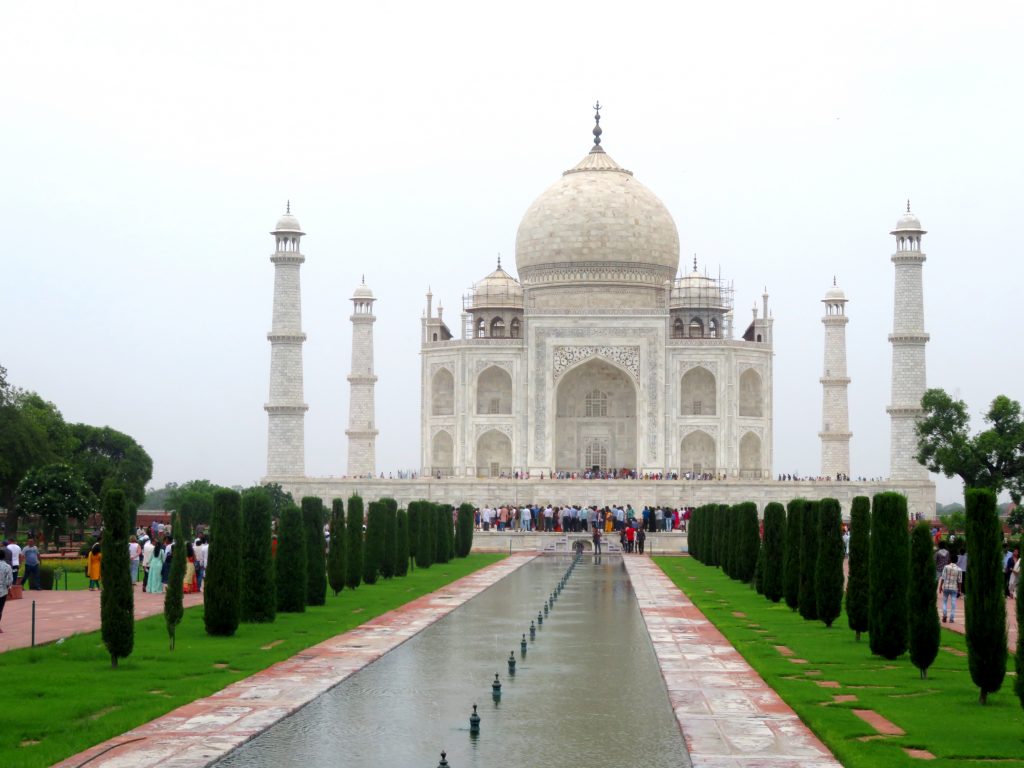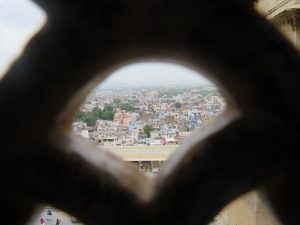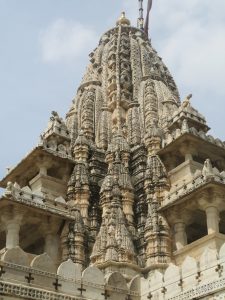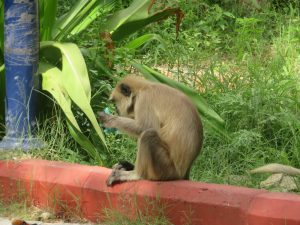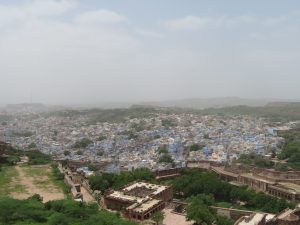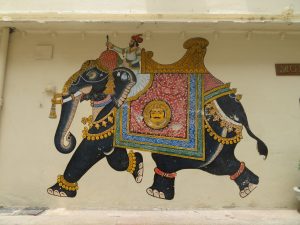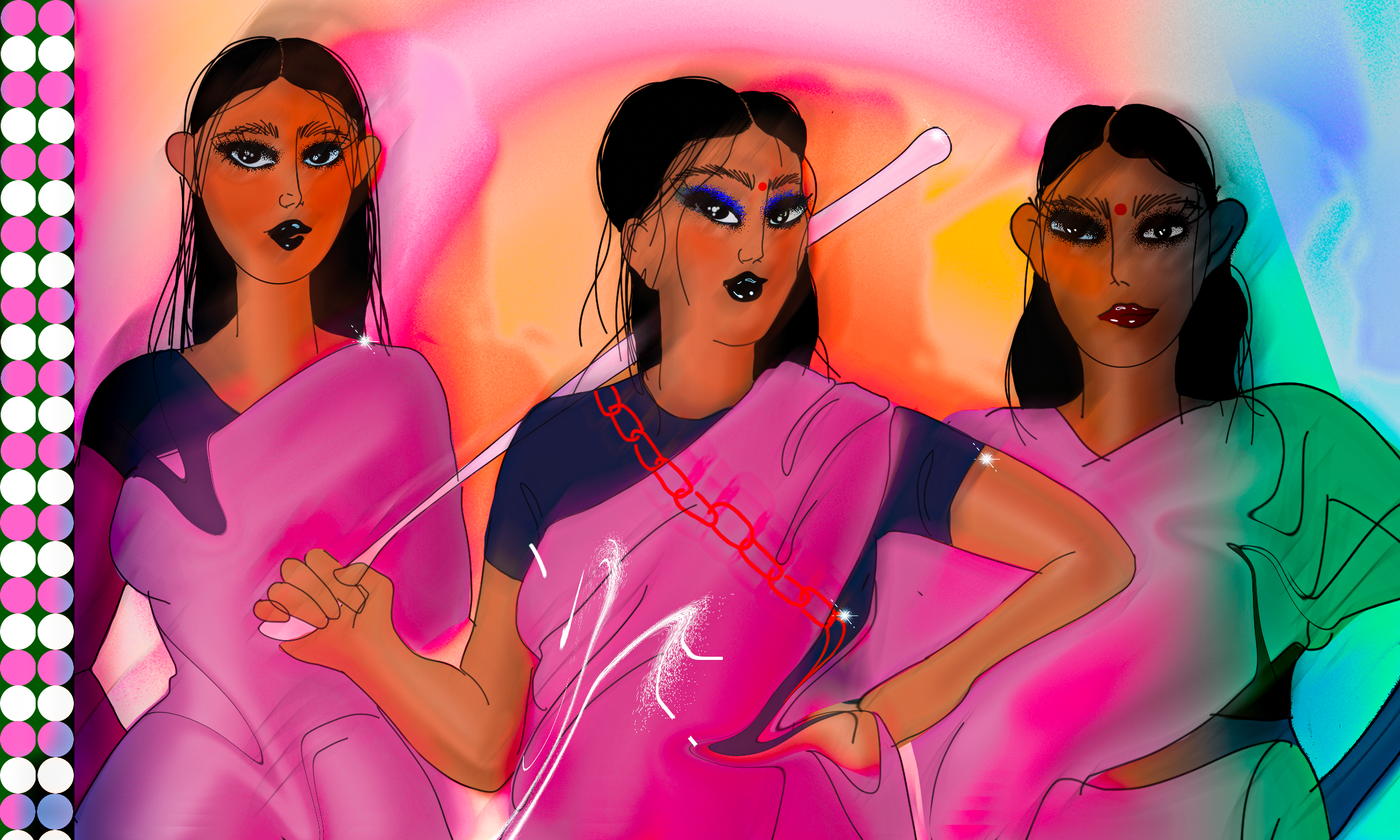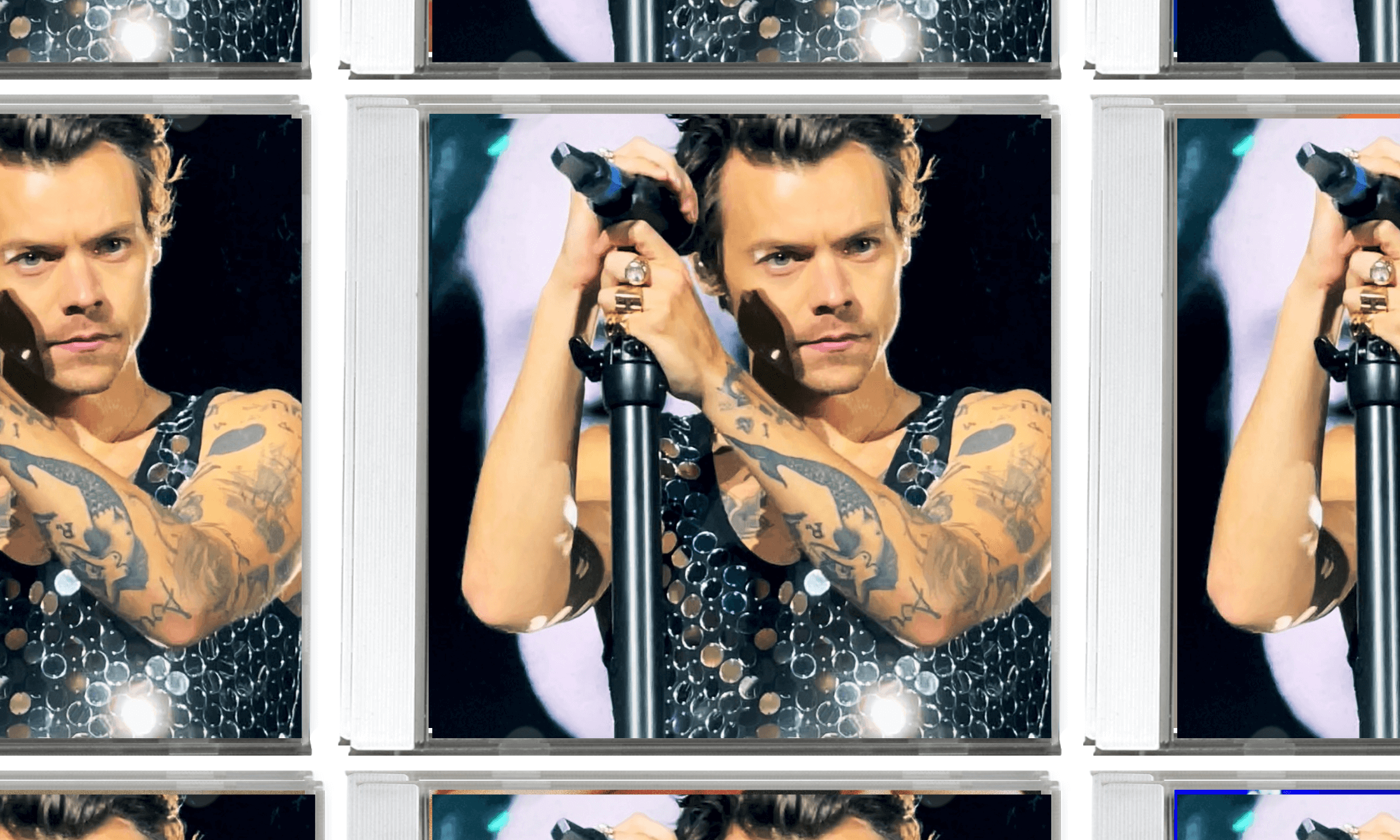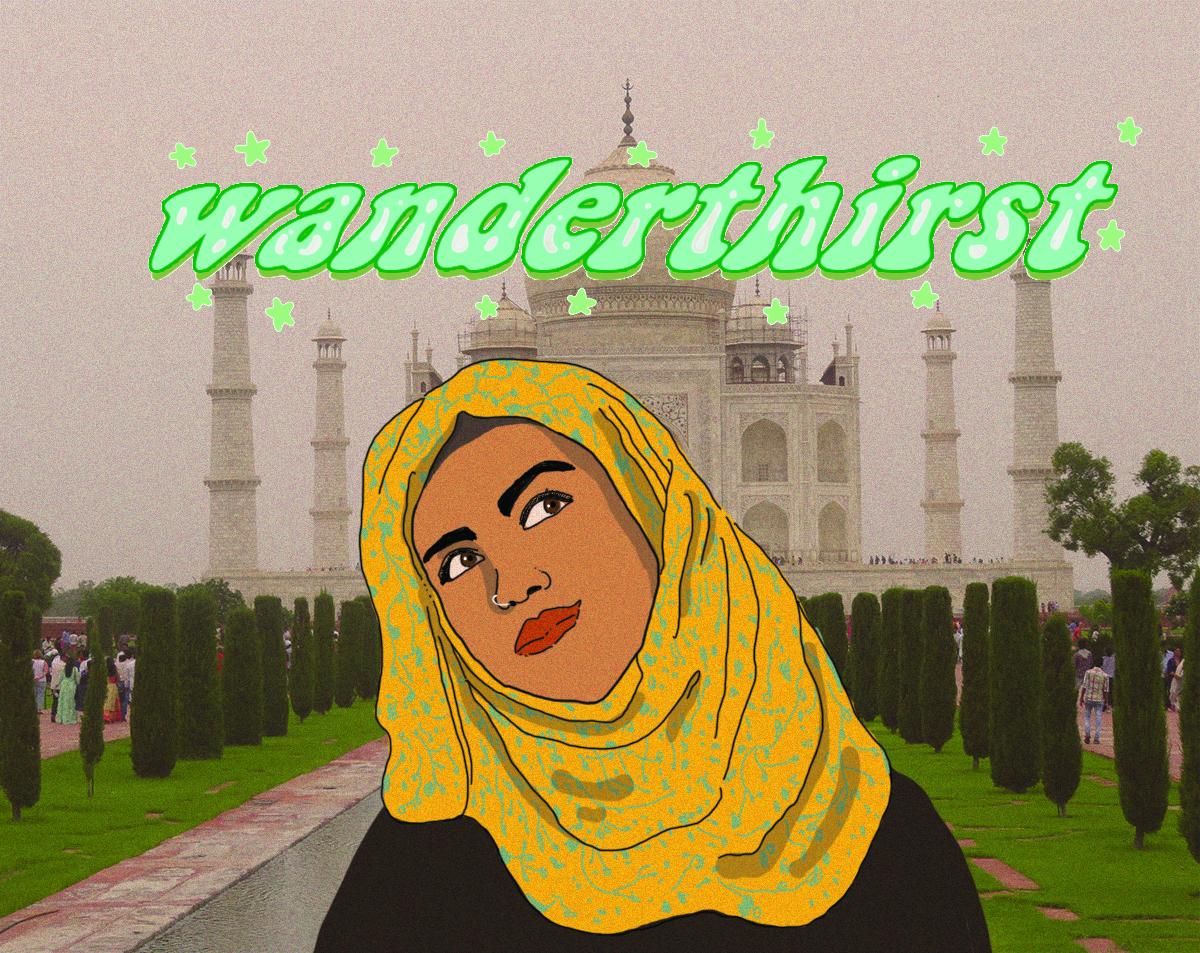
Illustration by serina.kitazono
In summer 2018 my family and I planned a trip to India. As it was my first time, I wasn’t sure what to expect. Although the UK is considered multicultural and Indian culture is prevalent, I often feel connected to the Western world more than my Indian origins. This was a chance to reclaim my roots and rediscover my true diaspora. I was also looking forward to visiting a renowned country with several beautiful sights and a different way of life.
I started my journey in Rajasthan, the land of colours. Jodhpur is known as “the blue city” and all my senses were in overdrive as I took in the sights, smells and tastes. Marble palaces, stone walls and colourful saris everywhere. Some of the beautiful sights I encountered were Amer Fort, Mehrangarh Fort and the colourful Rajasthani streets.
Every day was spent drinking in the many views of this land of wonders and, of course, experiencing true Indian tea for the first time, which really redefined the concept of “bittersweet”. Amer Fort looked like a fairy-tale palace brought to life and I marvelled at every inch of the architecture and history.
My amazement didn’t stop there as I obviously paid a trip to see the Taj Mahal – one of the most famous pieces of Indian history. Granted, it was crowded, hot, and I had to fight off tourists just to get a picture, but I desperately wanted to see it in person. And here I was.
Don’t get me started on the shopping! Being an Indian girl means having multiple outfits in your closet for multiple cultural occasions. It’s a walking talking cliché but the journey to finding your perfect sari or lehenga choli is the real deal that should not be taken lightly. Just one word to the shop owner about what I was looking for and he began pulling out dozens of different silks and materials.
After finally narrowing down my search, the garments were woven around me by skilled workers and they referred to me as didhi (sister) which was a sentimental touch unlike the shop workers in the UK. Trying to pick between beautiful and beautiful was mind boggling and after many final decisions it felt like we – my family, the lovely shop workers and I – all conquered a mountain, or something less dramatic, as I walked out of the shop beaming with my many purchases.
Just in that month’s trip I experienced many lifestyle changes: breakfast became an integral part of my day; it was a family affair surrounded by hot delicacies such as warm parathas, aloo gobi, puris and some sweet jalebis to finish off. It was a stark contrast to the cereal and coffee I usually gulped down at home in zero time to avoid being late. I visited the famous Raj Mandir, which is a glamorous cinema and a must-see in Jaipur. Red velvet sofas while watching a movie? A big tick!
“There are a lot of assumptions about Indians being poor and uneducated and that India is a struggling country”
Sadly, there were negative things I experienced while on my trip. I visited an elephant sanctuary but was dismayed at the treatment the elephants were receiving at the expense of tourists and their owners. One of the services you could pay for was to paint the elephants and, of course, ride them. It’s a common practice for elephants to be treated like circus animals and I wasn’t cool with it. Not to mention the extremely small space they were confined in.
I also found it hard to register the amount of social inequality I saw. There are a lot of assumptions about Indians being poor and uneducated and that India is a struggling country. I did see a lot of beggars and poor people, especially children, which was upsetting, but I also visited parts of India that were inhabited by the wealthy, complete with luxurious hotels, shopping malls and restaurants.
There have been lots of stories in the news about shocking attacks and sexual violence, so safety was a big concern for me. A recent survey by the Thomson Reuters Foundation states that India is the most dangerous country in the world for women. Whilst the survey received some criticism for its perceived bias, we still made sure to stay together, especially at night when we went out.
Back home, I could stay out late and would obviously take safety precautions, but here was very different. The idea of me, my sisters or my mother going out on our own at night was not an option. It’s clear that women being victimised is a constant recurrence. Even in the daytime, there were times where I’d feel uncomfortable as men would stare and make comments as I walked past.
“I got the impression that the West is considered very culturally backward”
Visiting family in India was also an eye-opening experience. The houses in village-like areas and towns had a noticeable difference. There were also a lot of assumptions about the British that I picked up on. A lot of my family members asked if I could speak Gujarati and I replied that yes, I’d been taught it while I was young.
I got the impression that the West is considered very culturally backward and that the youth have no understanding of their origins and background. They also had apprehensions that their houses weren’t “good enough” or that we wouldn’t like India.
While it’s true that there were a lot of contrasts between my culture and the environment in which I grew up, I took this month as a time of learning and acceptance. I was eager to find out as much as I could about the Indian way of life without disregarding my values. At some points I feel like my culture can conflict with my Western upbringing so this trip was a powerful reminder that I need to reclaim my roots.
Useful information
-
Use taxis and agree on a fare before you start your journey as some will scam you and raise their price
-
It’s a good idea to use a taxi company which is recommended by your hotel, as they will be more legitimate
-
In market stalls, souvenir shops etc you will be harassed to buy things, so be firm and stand your ground if you don’t want to
-
Also, on that note, tourists are often scammed, the price is higher for them. On some occasions they will lower the prices if you show interest
-
Don’t go out on your own at night and stick to well-lit areas
-
Most tourist locations (e.g. Taj Mahal, Amer Fort etc) require tourists to provide their passport as a form of identity so bring your passport with you when visiting these places
-
Always drink bottled water and carry antibacterial gel around
-
Only eat street food that looks like it’s been well cooked and only eat from restaurants that have a good standard of food hygiene. Some food vendors may be surrounded by flies and things like fruit may be left out for ages. Use common sense and stick to eating at places that look popular and busy. There is a reason people aren’t eating at certain places!
-
Delhi belly can put a dampener on any holiday, so give your stomach time to adjust to the cuisine here. It may be very spicy and heavy so it’s best to eat smaller quantities as you adjust and adapt.
-
Drink water regularly and dress appropriately to the weather as dehydration can occur
-
Dress appropriately. For example, if you are going to religious sites make sure your shoulders and upper body and legs are well covered.
Highlights
-
Taj Mahal: A must see tourist attraction for people who want to learn the history behind one of the most famous ivory white marble structures
-
Amer Fort: visit this fairy-tale palace if you’re also interested in architecture and history.
-
Mehrangarh Fort: A great Indian fort with a breathtaking landscape
-
Lake Pichola: Take in some beautiful views from the water
-
Chocki Dhani: Ever wondered what an authentic Rajasthani village would be like? Chocki Dhani showcases it all for a terrific experience
-
Jodhpur: Known as “the blue city”, a popular tourist destination
-
Udaipur: Known as the “city of lakes”
-
Delhi: the Capital of India, a mix of ‘old’ and ‘new’ culture.

